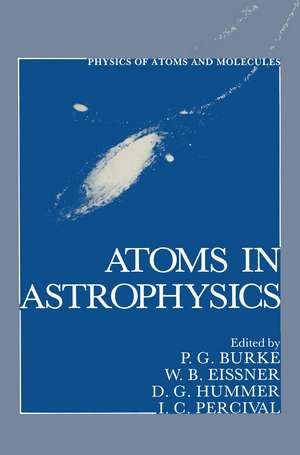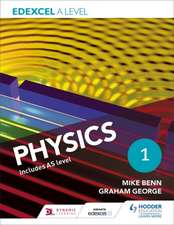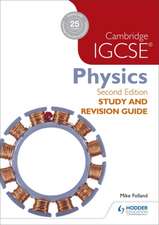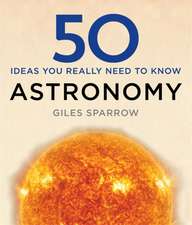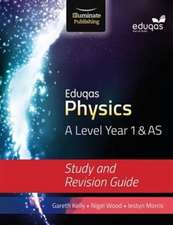Atoms in Astrophysics
Editat de P. Burkeen Limba Engleză Paperback – 12 noi 2011
Preț: 391.99 lei
Nou
Puncte Express: 588
Preț estimativ în valută:
75.01€ • 80.21$ • 62.54£
75.01€ • 80.21$ • 62.54£
Carte tipărită la comandă
Livrare economică 18 aprilie-02 mai
Preluare comenzi: 021 569.72.76
Specificații
ISBN-13: 9781461335382
ISBN-10: 1461335388
Pagini: 380
Ilustrații: XVII, 356 p. 25 illus.
Dimensiuni: 152 x 229 x 20 mm
Greutate: 0.51 kg
Ediția:1983
Editura: Springer Us
Colecția Springer
Locul publicării:New York, NY, United States
ISBN-10: 1461335388
Pagini: 380
Ilustrații: XVII, 356 p. 25 illus.
Dimensiuni: 152 x 229 x 20 mm
Greutate: 0.51 kg
Ediția:1983
Editura: Springer Us
Colecția Springer
Locul publicării:New York, NY, United States
Public țintă
ResearchCuprins
1. Low-Energy Electron Collisions with Complex Atoms and Ions.- 1. Introduction.- 2. Theory of Electron Collisions with Atoms and Ions.- 3. Numerical Solution of the Coupled Integro-Differential Equations.- 4. Computer Program Packages.- References.- 2. Numerical Methods for Asymptotic Solutions of Scattering Equations.- 1. Introduction.- 2. Specification of Asymptotic Forms.- 3. Travels in Intermedia.- 4. At the Border of Asymptopia.- 5. Concluding Remarks.- References.- 3. Collisions between Charged Particles and Highly Excited Atoms.- 1. Introduction.- 2. The Impact Parameter (IP) Method.- 3. The Sudden Approximation.- 4. Transitions between Levels with Quantum Defects.- 5. Transitions within the Degenerate Sea.- References.- 4. Proton Impact Excitation of Positive Ions.- 1. Introduction.- 2. Excitation of Fine-Structure Transitions.- 3. Excitation of Metastable Transitions.- 4. Charge-Transfer Ionization.- References.- 5. Long-Range Interactions in Atoms and Diatomic Molecules.- 1. Introduction.- 2. General Form of the Model Hamiltonian.- 3. Form of the Model Potential for Atomic Systems.- 4. Form of the Model Potential for Diatomic Systems.- 5. Addition Theorems for Solid Harmonics.- References.- 6. Applications of Quantum Defect Theory.- 1. Historical Survey.- 2. Mathematical Background to Quantum Defect Theory.- 3. Single-Channel Quantum Defect Methods: General Formulas in the Independent-Particle Approximation.- 4. Applications to Simple Multichannel Problems.- 4.2. Bound States of Complex Ions by Extrapolation of Calculated Scattering Parameters: Configurations 1s22s22pqnl.- 5. Extrapolation of the Generalized Reactance Matrix.- 6. Conclusions.- References.- 7. Electron-Ion Processes in Hot Plasmas.- 1. Introduction.- 2. Line Intensities.- 3. Electron-Ion Processes.- 4. Conclusion.- References.- 8. The University College Computer Package for the Calculation of Atomic Data: Aspects of Development and Application.- 1. Introduction.- 2. The Growth of Astronomical Observations.- 3. Some Aspects of the Genesis of the Programs.- 4. The C III Challenge.- References.- 9. Planetary Nebulae.- 1. Introduction.- 2. Observations.- 3. Models: Atomic Data.- References.- 10. Forbidden Atomic Lines in Auroral Spectra.- 1. Introduction.- 2. Beginnings.- 3. Seaton’s Work.- 4. Refinement of Classical Theory.- 5. Advent of In Situ Measurements.- 6. N2(A3?u+)—O Excitation Transfer.- 7. Quenching.- 8. Coordinated Rocket and Satellite Measurements.- 9. ?3466 and ?10,400 of N I.- References.
